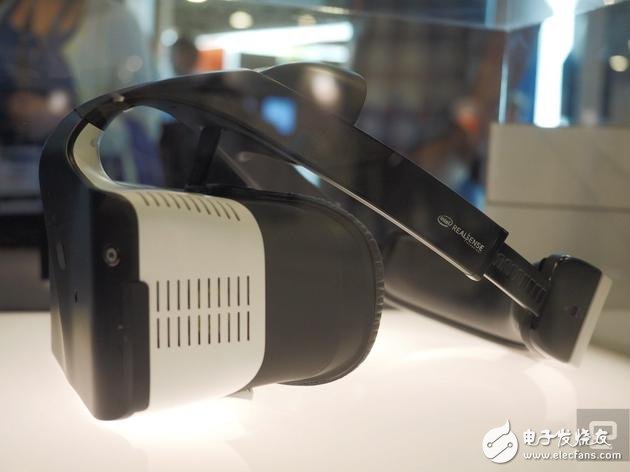At 9 am on August 16th, San Francisco time, technology developers from around the world were woken up by a concert without instruments. The drummer hit the air, the keyboard player played in the air, there was no disc in front of the DJ, and they excitedly turned the air in front of them. The quality of the music did not get worse because there was no instrument. The real world and the virtual world naturally interact and merge. For the past five years or so, Intel, the veteran IT giant, has tried to tear off its own chip tags, and it has undergone an unprecedented transformation. One of the results is the above-mentioned Merged Reality at the Intel Information Technology Conference (IDF16). The real behind-the-scenes push is the real-world technology. Realizing the real technology behind the reality Virtual reality still requires a special space, a wired headset, connected to the PC, and external sensors, as well as a hand-held controller. Participants who blend reality do not need any interaction tools like handles. They can directly use their hands and limbs to interact with their physical behaviors and elements in the virtual world. Helping people achieve this leap is a wireless helmet called Alloy, and the real mystery is the real RealSense camera on the helmet. The real-world camera can be rotated at six angles to perform positioning in three-dimensional space, capturing user actions and interacting with items in the virtual scene. Over the past few years, Intel has continued to demonstrate the capabilities of real-world technology in capturing images, measuring depth, and sensing position. On IDF16, the presenter wears Alloy, with bare hands, directly opens a door to the virtual world. Then he takes a real dollar and explores it into the virtual world, using the tool to free the coin. destruction. After the experiment, the coin was still in his hand intact. This is a landmark release in the transformation of a PC company. In an exclusive interview with China Business News, Yang Xu, vice president of Intel Corporation and president of China, said that during the transformation process, Intel once wanted to cover its core capabilities on PC chips to chips on mobile phones and smart terminals. But the fact is cruel, the former is a general-purpose chip, technology accumulation is one of the core competitiveness, and the chips needed in the field of smart terminals are more of a combination of various functional modules. For Intel, this is not Your own long term. "Technology itself is Intel's long term, the future application direction, what key technologies are needed, and is Intel able to develop these technologies?" Based on this consideration, Intel introduced real-world technology. Yang Xu said to the "First Financial Daily" that the early real-world technology was carried on the PC side. In practical applications, Intel found that there is a real demand in the fields of drones, robots, and driverless driving. Imaginative future “When we talk about the perceptualization of computing, we add visual, audible, and tactile sensations to the computer. Now, we define the visual part as 'Visual Intelligence',†Intel CEO BrainM.Krzanich further Explain the meaning of real-world technology. In his view, real-world technology is like adding smart eyes to the product. YuneecTyphoonH, an intelligent drone equipped with Intel RealSense technology, is equipped with obstacle avoidance and self-propelled capabilities. Earlier, the real-world robots that were able to distribute their own items and make fun of them were also used in Starwood and InterContinental. Another important application area for real-world technology is driverless. ElmarFrickenstein, senior vice president of BMW's autonomous driving division, sits in the co-pilot seat of a BMW i3 car and activates the driverless function. The vehicle slowly enters the IDF16's podium, a 360-degree obstacle-obliging car. The technical ability of visual intelligence. In the case of Ke Zaiqi, achieving the highest level of driverless driving is a true example of “integrated realityâ€. In order to create a correct driving route for the car in the real environment, cars, obstacles and pedestrians need to have The image of the virtual world. The boundary between the digital world and the real world is disappearing, and integration is the future. This is a test of whether Intel is actually bringing out its technological capabilities outside the chip. "The role of RealSense Technology (Visual Intelligence) is to identify different goals, and deep machine learning (artificial intelligence) teaches cars to know the real world." Ke Zaiqi said. Lithium Storage Battery,Lithium Ion Battery,Lithium Battery,Electric Car Lithium Battery Henan Xintaihang Power Source Co.,Ltd , https://www.taihangbattery.com